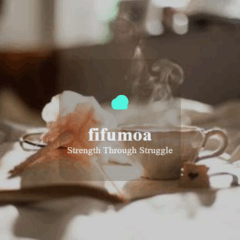Choosing the right notebook can feel surprisingly challenging. With so many options available—from sizes and paper types to bindings and covers—it’s easy to end up with a notebook that sits unused on your shelf. To help you find one you’ll truly enjoy and want to use daily, this guide walks you through key considerations and practical tips.
Why Choosing the Right Notebook Matters
A notebook isn’t just a tool; it’s a companion for your thoughts, ideas, plans, and creativity. When you pick a notebook that fits your habits, preferences, and goals, you’re more likely to stay organized and inspired. On the other hand, a notebook that doesn’t suit your needs quickly becomes clutter or wasted space.
Step 1: Define Your Primary Use
Start by thinking about how you plan to use your notebook. The purpose heavily influences your choice.
Common notebook uses
– Journaling or diary writing: personal reflections and daily notes
– Work or school notes: lectures, meetings, project ideas
– Creative writing or sketching: stories, poetry, drawing, brainstorming
– Planning and organization: to-do lists, calendars, habit trackers
– Recipe collection or hobby log: cooking, gardening, fitness
Knowing your primary use helps determine size, paper type, and layout.
Step 2: Choose the Right Size
Size matters because it affects portability and writing space.
– Pocket-sized (A6 or smaller): Very portable, fits in most bags or pockets, but limited space per page.
– Medium (A5 or similar): Popular size balancing portability and adequate writing area.
– Large (A4 or bigger): Ideal for extensive note-taking, planning, or sketching but less portable.
Think about how and where you’ll use the notebook most often to pick a comfortable size.
Step 3: Select Paper Type and Quality
Different paper types suit different uses.
Paper weight (thickness)
Measured in grams per square meter (gsm), higher gsm means thicker paper.
– For ink-heavy use (fountain pens, markers): opt for 90gsm or higher.
– For pencil or ballpoint pen: 70–80gsm usually works well.
Paper finish and color
– Plain/unlined: Great for sketching, freeform notes.
– Lined/recycled: Good for writing and note organization.
– Grid or dot grid: Versatile for bullet journaling, graphs, and sketches.
– Cream or white paper: Cream is easier on the eyes; white is brighter.
Test samples if possible to see what you prefer.
Step 4: Decide on Binding Type
The binding affects how your notebook opens and feels.
– Spiral-bound: Lays flat and can fold back easily, but pages may tear out.
– Perfect bound (glued spine): Sleek, but may not open flat.
– Sewn binding: Durable and opens flat, best for long-term use.
– Disc-bound or refillable: Flexible and customizable but may feel bulkier.
Consider durability and how you plan to use the notebook.
Step 5: Cover Material and Design
Since you’ll be carrying or seeing the notebook frequently, the cover plays a big role.
– Hardcover: Offers protection and a sturdy writing surface.
– Softcover: Lightweight and flexible, but less protective.
– Leather or faux-leather: Durable and stylish but may be pricier.
– Fabric or paper cover: Often more affordable and lightweight.
Choose a design and color that motivates you to pick it up.
Step 6: Additional Features to Consider
Some notebooks come with extras that might enhance your experience:
– Page numbers and index: Helps with organization.
– Built-in bookmarks or elastic closures: Keeps your place and contents secure.
– Pockets for loose papers: Handy for receipts, notes, or stickers.
– Perforated pages: Easy to tear out content.
– Pre-printed templates (calendars, to-do lists): Boosts productivity.
Think about what features you really need to avoid unnecessary bulk or complexity.
Step 7: Test It Out Before Buying
If possible, visit a stationery store to hold various notebooks. Flip through the pages, feel the paper, test how it opens, and imagine your writing experience. If you’re shopping online, check reviews for insights about paper quality and durability.
Step 8: Start Small and Experiment
You don’t have to commit to an expensive or large notebook right away. Begin with a smaller or more affordable option and see how it fits your habits. Over time, you’ll learn what features matter most to you.
Tips to Actually Use Your Notebook
– Set a routine: Dedicate a few minutes daily or weekly to write or plan.
– Keep it visible: Store your notebook where you’ll see it regularly.
– Personalize it: Add stickers, tabs, or doodles to make it inviting.
– Use one notebook at a time: Avoid spreading notes across multiple books.
– Don’t stress about perfection: It’s for you, so allow mistakes and flexibility.
Conclusion
Selecting a notebook that you’ll actually use involves more than picking something pretty. When you consider your purpose, size, paper type, binding, cover, and special features, you increase your chances of finding a notebook that matches your style and keeps you inspired. Remember to try different options and make your notebook a habit, and soon enough it’ll become an essential part of your daily routine. Happy writing!

